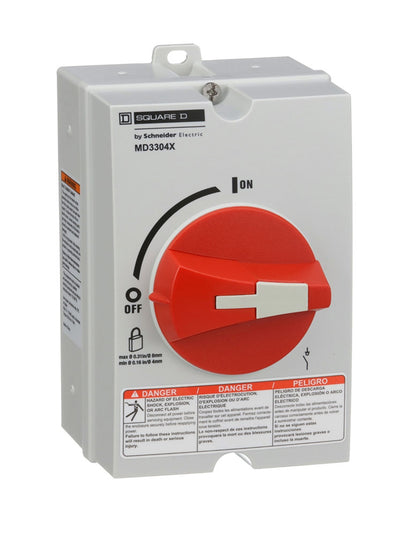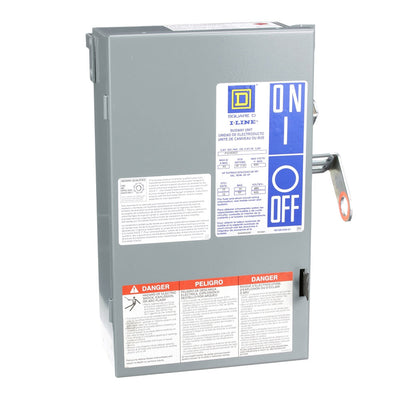Types of Circuit Breakers
Types of Circuit Breakers
A circuit breaker is an automatically operated electrical switch designed to protect an electrical circuit from damage caused by excess current from an overload or short circuit. This guide will walk you through the different types of circuit breakers to help you determine which is best for your home's electrical needs.
Tip: For use in Canada, ensure the breakers you purchase are CSA approved. Installation or replacement of circuit breakers is best left to licensed professionals.
The three main types of circuit breakers are standard, GFCI and AFCI. Each handles different amp capacities and operates in different locations in the home.
The brand of breaker you choose is typically based on the brand of your panel.
Standard Circuit Breakers
Single-pole breakers
- Occupy one slot on a breaker panel.
- One hot wire and one neutral wire.
- Supply 120V to a circuit.
- Handle 15 to 70 amps depending on the brand and type.
- Depending on the brand, they're available in three types: Full size (1-inch wide), half size (1/2-inch wide) and twin/tandem (1-inch wide with two switches and controls two circuits).
Appliances/circuits they’re used for:
-
General lighting outlets
-
Fans
-
Curling irons/hair dryers
-
Vacuums
-
Outdoor lighting
-
Power tools
-
Air compressors
Double-pole breakers
- Occupy two slots on a breaker panel
- Two hot wires that share one neutral wire
- Supply 120V/240V or 240V to a circuit.
- Range in capacity from 15 to 200 amps.
- Are required for large appliances such as dryers and water heaters.
Appliances/circuits they’re used for:
-
Central air conditioners
-
Electric dryers
-
Electric ranges
-
Electric water heaters
GFCI Circuit Breakers
Ground fault circuit interrupter (GFCI) circuit breakers are simple: By installing one in the service panel (breaker box), it adds GFCI protection to an entire circuit, including the wiring and all devices and appliances connected to the circuit.
GFCI breakers are required in wet locations such as kitchens, bathrooms, outdoor areas, basements and garages. They are also recommended for workshops and areas where power tools are in use.
Tip: GFCI protection is not recommended for appliances that must run all the time, such as refrigerators or medical devices, as the breaker may trip without your knowledge.
AFCI Circuit Breakers

Arc fault circuit interrupter (AFCI) circuit breakers protect against an unintentional electrical discharge in an electrical cord or wiring that could cause a fire. Once the breaker senses the electrical jump and abnormal path, it instantly disconnects the damaged circuit before the arc builds enough heat to catch fire.
An AFCI breaker selectively distinguishes between a harmless arc (incidental to normal operation of switches, plugs, and brushed motors), and a potentially dangerous arc (that can occur, for example, in a lamp cord which has a broken conductor).
Dual function CAFCI/GFCI circuit breakers are a new type that protect against both arc faults and ground faults, which can save time and money while providing more safety than the other versions.
When installing, check the latest National Electrical Code, as requirements in most areas call for AFCI breakers in all rooms of the house under the 2017 code update. National building codes require AFCI breakers be used instead of standard breakers in new homes.
Compatibility
For use in Canada, ensure the breakers you purchase are CSA Approved.
The circuit load will determine the breaker size you need – and you’ll need to make sure to get the right brand, as all breakers are not interchangeable.
Load Capacity: Determine the amp size of the circuit breaker you need to install based on the total circuit load. Remember that the safety rating for circuit breakers is 80 percent of the maximum load.
Tip: Most appliances have the amp rating listed on them. Permanently installed large appliances such as A/C units, washing machines and ovens require their own dedicated circuit. Consult an electrician if you are unsure of your total circuit load.
Brand: Always install the correct brand of breakers in your breaker panel. While some breakers are interchangeable, many are not, even if they look the same. Replacing one brand of breaker with another can be dangerous, may void your breaker or panel warranty, and may cause you to fail an electrical inspection. Look on your breaker panel door for information about which breakers are compatible with your panel. Breakers continue to be manufactured for most panels, including older models.
Electrical Safety
Working with circuit breakers is dangerous and best left to licensed electricians due to the high voltage involved. Even minor jobs may require a permit, so check local building codes.
- Always shut off the main breaker in the breaker box before beginning any work in a breaker panel.
- Be sure the device you choose matches the wiring, load requirements and type of breaker panel you have. The information should be on the breaker panel door.
- Never replace a circuit breaker with one of a higher amp rating.
- Only add an additional breaker if you have an open slot in your breaker panel.
- The bus bar in the electrical panel may still be hot even if the main power is off.
- The wires leading into the electrical panel are always energized and should never be touched.
- Always have new electrical work inspected to ensure that it's properly installed and meets code requirements.
- Test AFCI and GFCI breakers every month to ensure they are in good working condition.
Circuit breakers provide overload protection to your electrical systems and ensure proper power distribution. Make sure you use the correct type of breaker to avoid an electrical overload or short circuits.





